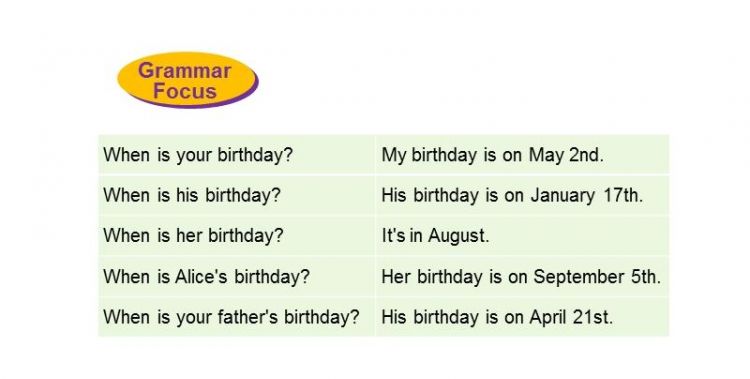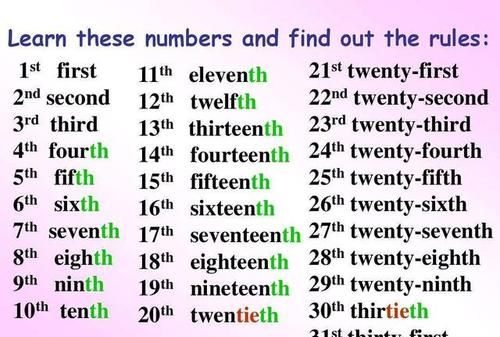本文目录
一切都是时间的问题英语
英语时间表达法
英语时间通常用以下两种方法表达:
1. 直接表达法<顺读法>
A. 整点时间
用基数词 + o'clock来表示,注意o'clock须用单数,可以省略。
如:eight o'clock 八点钟,ten (o'clock) 十点钟
B. 其它时间
用基数词按钟点 + 分钟的顺序直接写出时间。
如:eleven five 十一点五分,six forty六点四十,two thirty两点三十
2. 间接表达法<倒读法>
A. 如果分钟数少于30分钟,可用分钟 + past + 钟点表示,其中past是介词,意思是 “过”。
如:twenty past four 四点二十 eight past one 一点八分
B. 如果分钟数多于30分钟,可用(60分钟-原分钟数)+ to +(原钟点数+ 1)表示,其中to是介词,意思是“差”。
如:8:35 可表示为twenty-five to nine,差二十五分钟九点,即八点三十五(其中的分钟数twenty-five 是由60分钟减去35分钟得到的;钟点数nine是由8加1得到的)。
注:
A. 当分钟数是15分钟时,可用名词quarter (一刻钟)表示。
如:7:15可表示为 a quarter past seven,
12:15可表示为 a quarter past twelve
1:45可表示为 a quarter to two
B. 当分钟数是30分钟,即半点时间时,可用名词half(一半) past + 基数词来表示。
如:9:30 可表示为half past nine,3:30可表示为half past three。
C. 若想表明是上午,可在时间后加上am或a.m.。
如:thirteen past six a.m. (上午六点十三分)等。
若想表明是下午,可在时间后加上pm或p.m.。
如:four o'clock p.m.(下午四点)等。
D. 若表示的时间不够准确,可在时间前加上介词about。如:about eight(大约八点)等。
E. 在时间前面应用介词at来表示在的意思。
如:at nine在九点钟,at about five thirty-five p.m. 大约在下午五点三十五分等
所以,1点23分46秒就是twenty-three minutes and forty-six seconds past one

初中英语8个时态 定义,标志词,结构
一、 一般现在时
1.概念:经常、反复发生的动作或行为及现在的某种状况。
2.时间状语: always, usually, often, sometimes, every week (day, year, month…), once a week, on Sundays,
3.基本结构:动词 原形 (如主语为第三人称单数,动词上要改为第三人称单数形式)
4.否定形式:am/is/are+not;此时态的谓语动词若为行为动词,则在其前加don't,如主语为第三人称单数,则用doesn't,同时还原行为动词。
5.一般疑问句:把be动词放于句首;用助动词do提问,如主语为第三人称单数,则用does,同时,还原行为动词。
6.例句:. It seldom snows here.
He is always ready to help others.
Action speaks louder than words..
[编辑本段]二、 一般过去时
1.概念:过去某个时间里发生的动作或状态;过去习惯性、经常性的动作、行为。
2.时间状语:ago, yesterday, the day before yesterday, last week,last(year, night, month…), in 1989, just now, at the age of 5, one day, long long ago, once upon a time, etc.
3.基本结构:be动词;行为动词 的过去式
4.否定形式:was/were+not;在行为动词前加didn't,同时还原行为动词。
5.一般疑问句:was或were放于句首;用助动词do的过去式did 提问,同时还原行为动词。
6.例句:She often came to help us in those days.
I didn't know you were so busy.
[编辑本段]三、 现在进行时
1.概念:表示现阶段或说话时正在进行的动作及行为。
2.时间状语:now, at this time, days, etc. look . listen
3.基本结构:be+doing
4.否定形式:be+not+doing.
5.一般疑问句:把be动词放于句首。
6.例句: How are you feeling today?
He is doing well in his lessons.
[编辑本段]四、 过去进行时
1.概念:表示过去某段时间或某一时刻正在发生或进行的行为或动作。
2.时间状语:at this time yesterday, at that time或以when引导的谓语动词是一般过去时的时间状语等。
3.基本结构:was/were+doing
4.否定形式:was/were + not + doing.
5.一般疑问句:把was或were放于句首。
6.例句:At that time she was working in a PLA unit.
When he came in, I was reading a newspaper.
[编辑本段]五、 现在完成时
1.概念:过去发生或已经完成的动作对现在造成的影响或结果,或从过去已经开始,持续到现在的动作或状态。
2.时间状语:yet,already,just,never,ever,so far,by now,since+时间点,for+时间段,recently, lately, in the past few years, etc.
3.基本结构:have/has + done
4.否定形式:have/has + not +done.
5.一般疑问句:have或has。
6.例句:I've written an article.
The countryside has changed a lot in the past few years.
[编辑本段]六、 过去完成时
1.概念:以过去某个时间为标准,在此以前发生的动作或行为,或在过去某动作之前完成的行为,即“过去的过去”。
2.时间状语:before, by the end of last year(term, month…),etc.
3.基本结构:had + done.
4.否定形式:had + not + done.
5.一般疑问句:had放于句首。
6.例句:As soon as we got to the station, the train had left.
By the end of last month. We had reviewed four books
基本结构:主语+had+过去分词(done)
①肯定句:主语+had+过去分词+其他
②否定句:主语+had+not+过去分词+其他
③一般疑问句:Had+主语+过去分词+其他
④特殊疑问句:特殊疑问词+一般疑问句
[编辑本段]七、 一般将来时
1.概念:表示将要发生的动作或存在的状态及打算、计划或准备做某事。
2.时间状语:tomorrow, next day(week, month, year…),soon, in a few minutes, by…,the day after tomorrow, etc.
3.基本结构:主语+am/is/are+going to + do;will/shall + do.
4.否定形式:am/is/are not going to do ;will/shall not do。
5.一般疑问句:be放于句首;will/shall提到句首。
6.例句:They are going to have a competition with us in studies.
It is going to rain.
[编辑本段]八、 过去将来时
1.概念:立足于过去某一时刻,从过去看将来,常用于宾语从句中。
2.时间状语:the next day(morning, year…),the following month(week…),etc.
3.基本结构:was/were+going to + do;would/should + do.
4.否定形式:was/were/not + going to + do;would/should + not + do.
5.一般疑问句:was或were放于句首;would/should 提到句首。
6.例句:He said he would go to Beijing the next day.
I asked who was going there .
[编辑本段]九、将来完成时
1.概念:在将来某一时刻之前开始的动作或状态
2.时间状语:by the time of;by the end of+时间短语(将来);by the time+从句(将来)
3.基本结构:be going to/will/shall + have done
4例句:By the time you get back,great changes will have taken place in this area.
[编辑本段]十、现在完成进行时
1.概念:表示从过去某一时间开始一直延续到现在的动作。这一动作可能刚刚开始,也可能仍在继续,并可能延续到将来。
2.基本结构:have/has +been+doing
3.例子:I have been sitting here for an hour.
The chirdren have been watching TV since six o'clock.

英语中几个w 的问题
1 as 有“当……,XX……”“一边……,一边……”,表示同时性。
2this will be less than if you miss the train and have to wait an hour or more for the next one
不是楼主的理解,它这个句子是把语序打乱了,正常的语序应该是
this will be less than an hour or more for the next one (结果)
if you miss the train and have to wait (从句)
其实你可以根据“主将从现”的规则来识别从句,就可以发现从句的位置插进主句重。
3直到那时,注意放在句首句子要倒装
4.应该2种理解都可以。甚至可以理解为直白的求爱,例如歌曲“红磨坊”中法语的那句。
5.due可以直接作表语,字典中的解释为“车、船预定的,应到的”(牛津高阶)

一切都是时间的问题英语
七点二十五分 twenty five minutes after five / seven-twenty-five
十一点四十分 fourty minutes after eleven / twenty minutes to twelve / eleven- forty
十点四十五分 ten forty-five / fifteen minutes to eleven / forty-five minutes after ten
九点三十分 nine-thirty / thirty minutes after nine / thirty minutes to ten
七点二十分 seven-twenty / twenty minutes after seven / forty minutes to eight
一点十五 one fifteen / fifteen minutes after one

以上就是关于时间的问题初一英语8个 ,一切都是时间的问题英语的全部内容,以及时间的问题初一英语8个 的相关内容,希望能够帮到您。

